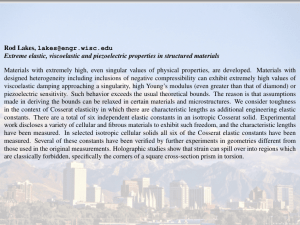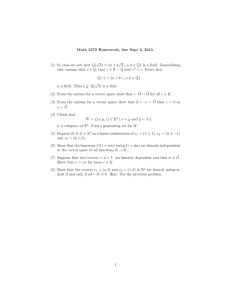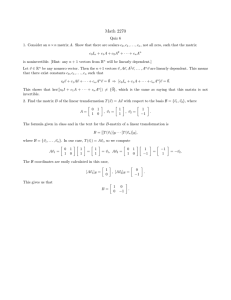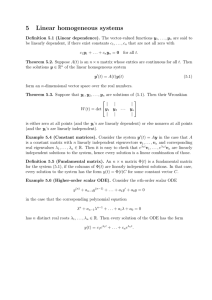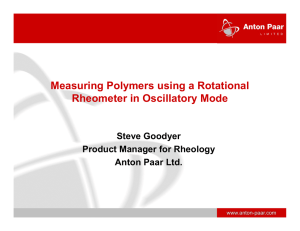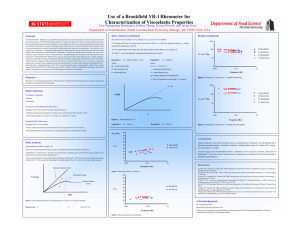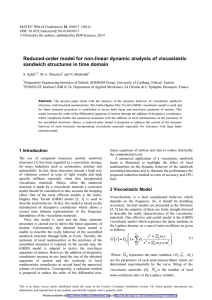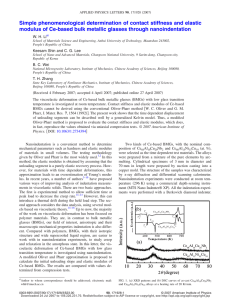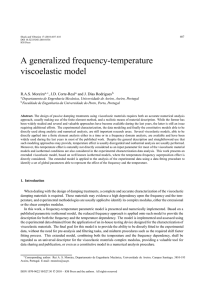Document 13562482
advertisement
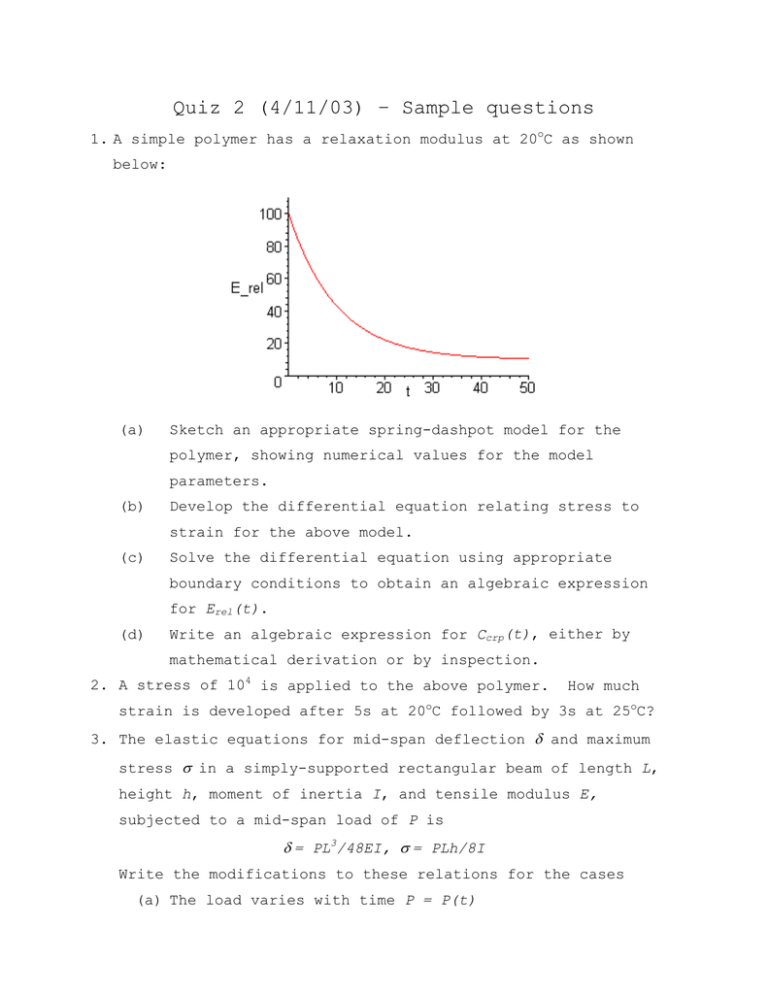
Quiz 2 (4/11/03) – Sample questions 1. A simple polymer has a relaxation modulus at 20oC as shown below: (a) Sketch an appropriate spring-dashpot model for the polymer, showing numerical values for the model parameters. (b) Develop the differential equation relating stress to strain for the above model. (c) Solve the differential equation using appropriate boundary conditions to obtain an algebraic expression for Erel(t). (d) Write an algebraic expression for Ccrp(t), either by mathematical derivation or by inspection. 2. A stress of 104 is applied to the above polymer. How much strain is developed after 5s at 20oC followed by 3s at 25oC? 3. The elastic equations for mid-span deflection δ and maximum stress σ in a simply-supported rectangular beam of length L, height h, moment of inertia I, and tensile modulus E, subjected to a mid-span load of P is δ = PL3/48EI, σ = PLh/8I Write the modifications to these relations for the cases (a) The load varies with time P = P(t) (b) The load is constant but the material is linearly viscoelastic (c) The load increases linearly with time (P = RPt) and the material is viscoelastic. 4. The elastic equations for angle of twist θ and shear stress τ in a circular shaft of length L, radius R, moment of inertia J, and shear modulus G, subjected to a torque T is θ = TL/JG, τ = TR/J Write the modifications to these relations for the cases (a) The torque varies with time T = T(t) (b) The torque is constant but the material is linearly viscoelastic (c) The torque increases linearly with time (T = RT t) and the material is viscoelastic. (d) Same as (c), but the temperature varies sinusoidally over a day. 5. For the three-element spring-dashpot model below: σ k0 k1 η Figure by MIT OCW. (a) Sketch the relaxation and compliance functions Erel(t) and Ccrp(t) conceptually, without recourse to equations. (b) Develop the differential equation for the model, and solve it for relaxation Erel(t). 6. The elastic equation for the load P required to elongate a tensile specimen of length L, area A, and elastic modulus E by a fixed amount δ is: P = AE δ/L Write the modifications to this relation for the cases (a) The elongation varies with time δ = δ(t) (b) The elongation is constant but the material is linearly viscoelastic (c) The elongation increases linearly with time (δ = Rδ t) and the material is viscoelastic. (d) Same as (c), but the temperature varies sinusoidally over a day.
